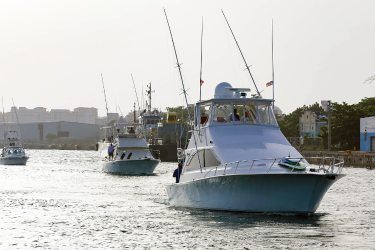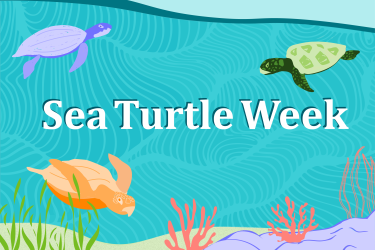Welcome to NOAA Fisheries’ inaugural Seal Week! During this week-long celebration, we are highlighting pinniped science, conservation, and management. Pinnipeds are a group of marine mammals that include seals, sea lions, and walruses. Unlike whales or dolphins, pinnipeds spend time on land to socialize, care for their young, and avoid predators. They are often seen on our shores. All pinnipeds are protected under the Marine Mammal Protection Act, and some are also listed under the Endangered Species Act.
All About Pinnipeds
Did you know that the word “pinniped” means “fin-footed” and that there are three families of pinnipeds? There are: Phocids, Otariids, and Odobenidae. Under the Marine Mammal Protection Act, NOAA Fisheries conserves and protects all phocids and otariids (seals and sea lions) in U.S. territorial waters and on shore. Our managers and scientists work with numerous partners to monitor their population dynamics, and help species that are recovering.
Phocids (Seals)
Phocids are also known as “earless seals” since they have ear holes, but no external ear flaps. They swim by propelling themselves through the water with their larger hind flippers (akin to “rear wheel drive”). They move on land by hopping on their bellies. Species of phocids include harbor seals, gray seals, and Hawaiian monk seals.
Otariids (Sea Lions and Fur Seals)
Otariids have external ear flaps. They swim by pulling themselves through the water with their larger front flippers (akin to “front wheel drive”) and they move on land by walking. Species of otariids include California sea lions, Steller sea lions, and northern fur seals.
Odobenidae (Walruses)
Odobenidae are walruses.The U.S. Fish and Wildlife is responsible for their conservation.
Seal Science at NOAA Fisheries
NOAA Fisheries uses cutting-edge technology to monitor seals and sea lions.
Drones and Artificial Intelligence
We use drones to study northern fur seals near an active volcano in Alaska’s remote Aleutian Island’s chain. Drones and artificial intelligence can allow for more productive and safer seal surveys.
Through partnerships in the tech industry, we use Artificial Intelligenceto detect ice seals and other marine mammals in images taken during aerial surveys of Arctic sea ice. Using image analysis will save scientists years of tedious work and make Arctic marine mammal population assessments faster and more efficient.
DNA Analysis
On the Atlantic coast, scientists are exploring seal stomach contents and using DNA to identify prey. We integrate this information into ecosystem models so we can better understand the nutritional relationships among marine species and how much seal predation contributes to natural mortality of commercially important fish stocks.
Unusual Mortality Events
We also learn about pinnipeds when they are injured, sick, or dead. To understand the health of marine mammal populations, scientists study Unusual Mortality Events. There are two ongoing pinniped UMEs: the Alaska ice seal UME and the Maine harbor and gray seal UME. Pinnipeds rest on the same beaches we use, eat the same types of fish we consume, and swim in the same waters we enjoy. Seals and sea lions are important sentinel species of ocean health. Investigating UMEs helps us better understand environmental issues that can potentially impact people.
Give Seals and Sea Lions Space
Seeing seals and sea lions resting on the beach or swimming close to shore is always exciting. Please remember to follow the golden rules of viewing pinnipeds in their natural habitat to protect the animals and yourself.
Stay at Least 150 Feet Away from Seals and Sea Lions—No Selfies!
Seals and sea lions need to haul out on land to rest, care for their young, and avoid predators. They can be easily disturbed if people get too close, which can be especially harmful to nursing pups. Please also keep your dogs leashed and children away from the animal.
Keep Your Snacks to Yourself
Feeding seals or sea lions teaches them to associate humans with food, attracting them to vessels or humans on beaches. Interactions with humans can end badly for you and for the animal.
Do Not Touch or Move Seals or Sea Lions on the Beach
They naturally come to shore to rest. Moving sick seals or sea lions to the water can cause them to drown, especially if they are weak or incapacitated. If you find a sick, injured, or dead seal, please immediately contact your local stranding network.




